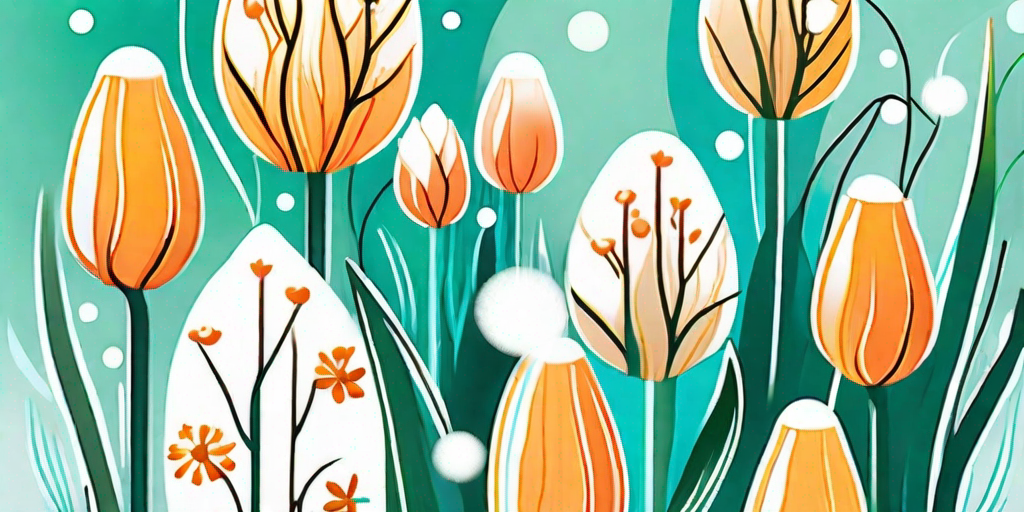
As the winter chill begins to thaw and the first signs of spring emerge, there's one particular spectacle that steals the show. Yes, we're talking about the stunning glory of the snow bulbs. These little gems of the plant world are the unsung heroes of the spring season, bursting into life when most other plants are still snoozing. But what exactly are snow bulbs, and why should you be as excited about them as we are? Let's dive in and find out.
The Magic of Snow Bulbs
Before we get too carried away, let's take a moment to clarify what we mean by 'snow bulbs'. These are not some sort of magical lightbulbs that produce snow (although that would be pretty cool). No, snow bulbs are a type of plant, specifically a type of bulbous plant that blooms in early spring, often while the last remnants of winter snow are still on the ground.
There are several species that fall under the umbrella of 'snow bulbs', but the most well-known is probably the snowdrop (Galanthus nivalis). With their delicate white flowers and hardy nature, snowdrops are a welcome sight in the bleak late winter landscape. But they're not the only game in town. Other types of snow bulbs include the winter aconite (Eranthis hyemalis) and the glory-of-the-snow (Chionodoxa forbesii), both of which produce vibrant yellow and blue flowers respectively.
The Snowdrop: A Closer Look
The snowdrop is perhaps the quintessential snow bulb. Originating from Europe, these hardy little plants have been a staple of British gardens for centuries. They're easy to grow, requiring little more than a shady spot and some well-drained soil. And the best part? They're deer and rabbit resistant, so you won't have to worry about your precious blooms being nibbled on by hungry critters.
But it's not just their practicality that makes snowdrops so beloved. There's something undeniably charming about these dainty white flowers. Their drooping heads and pure white petals have a certain fairy-tale quality to them, like tiny bells ringing in the arrival of spring.
Winter Aconite and Glory-of-the-Snow: The Other Contenders
While the snowdrop may be the poster child for snow bulbs, let's not forget about the other contenders. The winter aconite, with its bright yellow flowers, is like a little ray of sunshine on a cold winter's day. These plants are native to southern Europe and Asia, and they're a great choice if you're looking for something a bit different to the usual spring bulbs.
Then there's the glory-of-the-snow. True to its name, this plant produces a stunning display of blue flowers, often while there's still snow on the ground. The contrast between the vibrant blue petals and the white snow is truly a sight to behold. Plus, like the snowdrop, the glory-of-the-snow is easy to grow and resistant to most pests.
How to Grow Your Own Snow Bulbs
Now that we've whetted your appetite for snow bulbs, you're probably wondering how you can grow your own. Well, you're in luck, because these plants are surprisingly easy to care for. Here's a step-by-step guide to get you started.
-
Choose your bulbs: First things first, you'll need to decide which type of snow bulb you want to grow. Snowdrops are a classic choice, but don't be afraid to try something different like winter aconite or glory-of-the-snow.
-
Find the right spot: Snow bulbs prefer a shady spot with well-drained soil. They're perfect for planting under trees or shrubs, or in a rock garden.
-
Plant the bulbs: Plant your bulbs in the autumn, before the first frost. The bulbs should be planted at a depth of about three times their height.
-
Wait for spring: Once your bulbs are planted, all you need to do is wait for spring. With a bit of luck, you'll be rewarded with a beautiful display of flowers just when you need it most.
FAQs
When should I plant snow bulbs?
Snow bulbs should be planted in the autumn, before the first frost. This gives them time to establish their roots before the cold weather sets in.
Do snow bulbs need a lot of care?
Not at all! Snow bulbs are surprisingly low-maintenance. They prefer a shady spot with well-drained soil, but other than that they don't require much attention.
Can I grow snow bulbs in pots?
Absolutely! Snow bulbs can be grown in pots or containers, making them a great choice for balconies or small gardens.
Conclusion
So there you have it, the stunning glory of the snow bulbs. These little plants may be small, but they pack a big punch when it comes to brightening up the late winter landscape. Whether you're a seasoned gardener or a complete novice, we hope we've inspired you to give snow bulbs a try. After all, who wouldn't want a little bit of spring magic in their garden?















